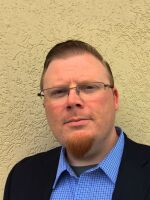It's been a little more than a year since 400,000 residents in Toledo and part of Michigan didn't have access to clean tap water. Toxins from algae blooms had caused water pulled from Lake Erie to be unusable. Ideastream’s Tony Ganzer spoke recently with the U.S. Secretary of Agriculture, Tom Vilsack, and began by asking if enough action has come out of all the attention gained from Toledo's crisis:
VILSACK: “You know, I think it’s important to understand that this is an issue that will take some time to deal with, because it has taken some time to build up in the soil. It is a result of legacy phosphorous; it’s a result of phosphorous and nitrogen that’s applied in the normal farming practice; and it’s also a result of climate change and weather-related circumstances. We have been very much aggressively focused on conservation and working with farmers to reduce the application of nitrogen and phosphorous, to embrace precision agriculture, so that over time through conservation, we reduce the amount of nitrogen and phosphorous that is applied, and therefore reduce the amount of soil erosion that occurs, and as a result improve the water quality that goes into the lakes. We’ve actually seen progress, from the standpoint that we’ve avoided over 400,000 tons of sediment as a result of the conservation practices since I’ve been Secretary. That means millions of pounds of phosphorous and nitrogen are not getting into the rivers and streams as they used to. We obviously have work to do, which is why we continue to encourage the states that we partner with to aggressively participate in the Regional Conservation Partnership Program, which is an effort to leverage our resources with state resources, with private non-profit resources, to expand the number of acres enrolled in conservation. And it is making a difference, but it will not necessarily be noticeable at this point, but five years from now, 10 years from now, 15 years from now, it’s definitely going to make a difference.”
GANZER: “As you know, many states are working—you, as [former] governor of Iowa, you know this very well—Ohio has taken moves to limit phosphorous run-off and things. There have been calls, though, for more federal action, including from Senator Sherrod Brown. Do you think that’s going to come, or is this really a state-level move.. ”
VILSACK: “Well, with due respect to Senator Brown, I think often times senators write letters and make comments without actually knowing what, in fact, has occurred on the ground. I think if the senator was aware of the fact that over $60 million has been invested by NRCS—our conservation group—in the state of Ohio; if he knew that we were dealing with literally thousands of producers, enrolling thousands of contracts, involving hundreds of thousands of acres being enrolled and involved in conservation; he would know that we are in fact doing what we need to do. And we are working with Ohio, and Michigan, in their effort and our effort to reduce phosphorous. So, I think it’s easy for folks who don’t know all the facts, who don’t know about the legacy of phosphorous that’s built up in soil naturally, that don’t understand and appreciate perhaps the consequence of a changing climate as it relates to this type of issue, who think that it’s something that can be done relatively quickly—it cannot. It does take a concerted effort, it takes a partnership. There are two ways to do this: you can mandate activity or you can incent activity. And I think, candidly, we get a lot more activity and a lot more cooperation when we incent activity, which is what we’re doing.”
GANZER: “I know you say this is a process dealing with a problem we’ve had for many, many years. But we’re looking at another very serious algae bloom season if the forecasts are true. Do you think we’re better off now than we were a year ago, when Toledo had its crisis?”
VILSACK: “Well, I think we are in the sense that we are continuing to expand conservation efforts. It may not necessarily be something that people notice, or they may feel that it’s counterintuitive given the fact that you have an algae bloom, but you then have to take into consideration 150-300% increase in rainfall in some parts of Ohio, which has significantly increased the amount of run-off that has taken place. With precision agriculture we are getting more and more precise, every single day, with what we apply to land. We appreciate that every acre of land is slightly different, and as we accumulate data, as we analyze that data, as farmers are utilizing GPS, and drones, and all of the new technology, you’re going to continue to see a concerted effort to reduce application and a concerted effort to improve and expand conservation, which over a long period of time—because we didn’t get into this in a short period of time—it’s going to require a long commitment, and we have it, and have had it, and will continue to have it.”




